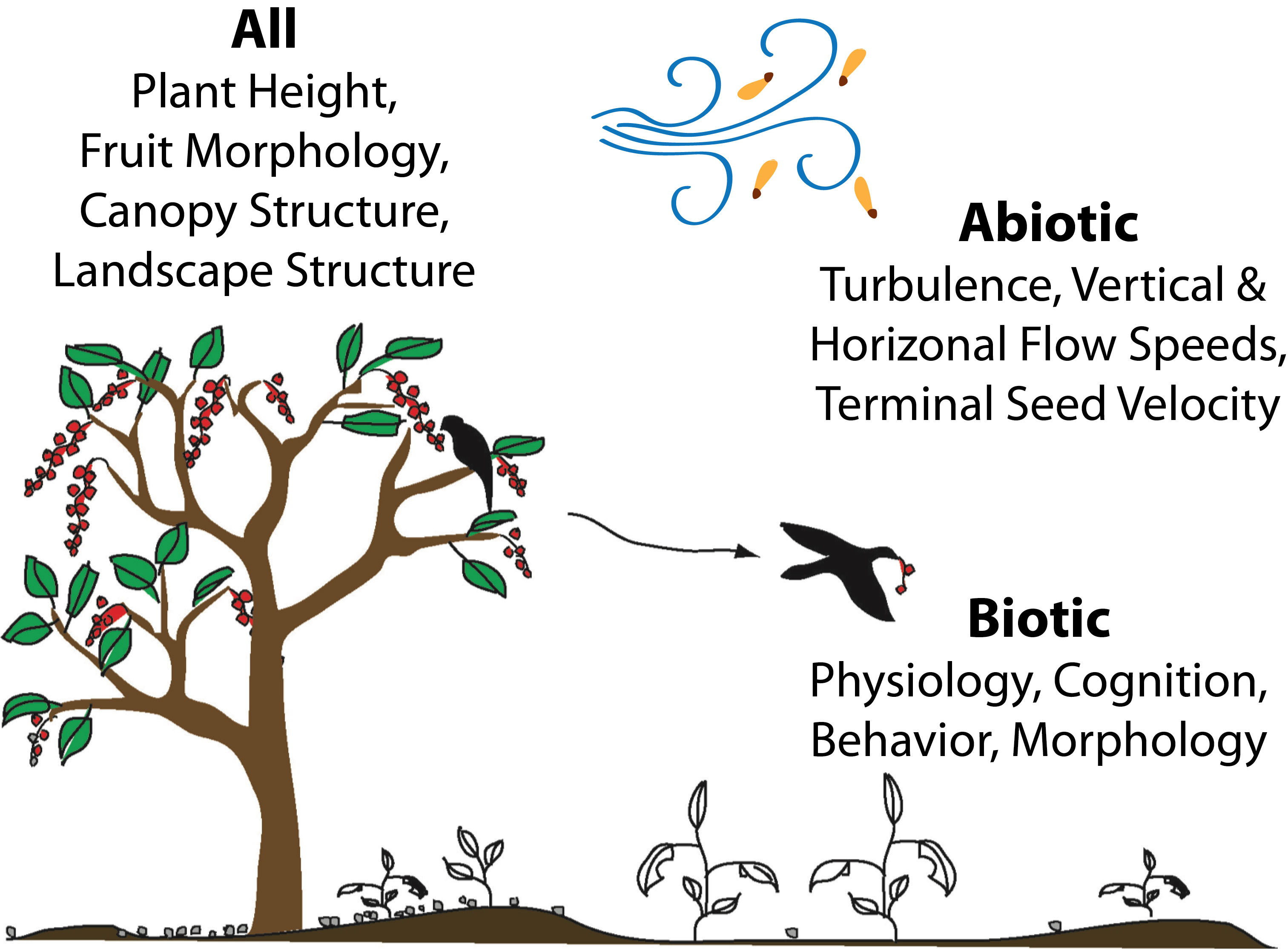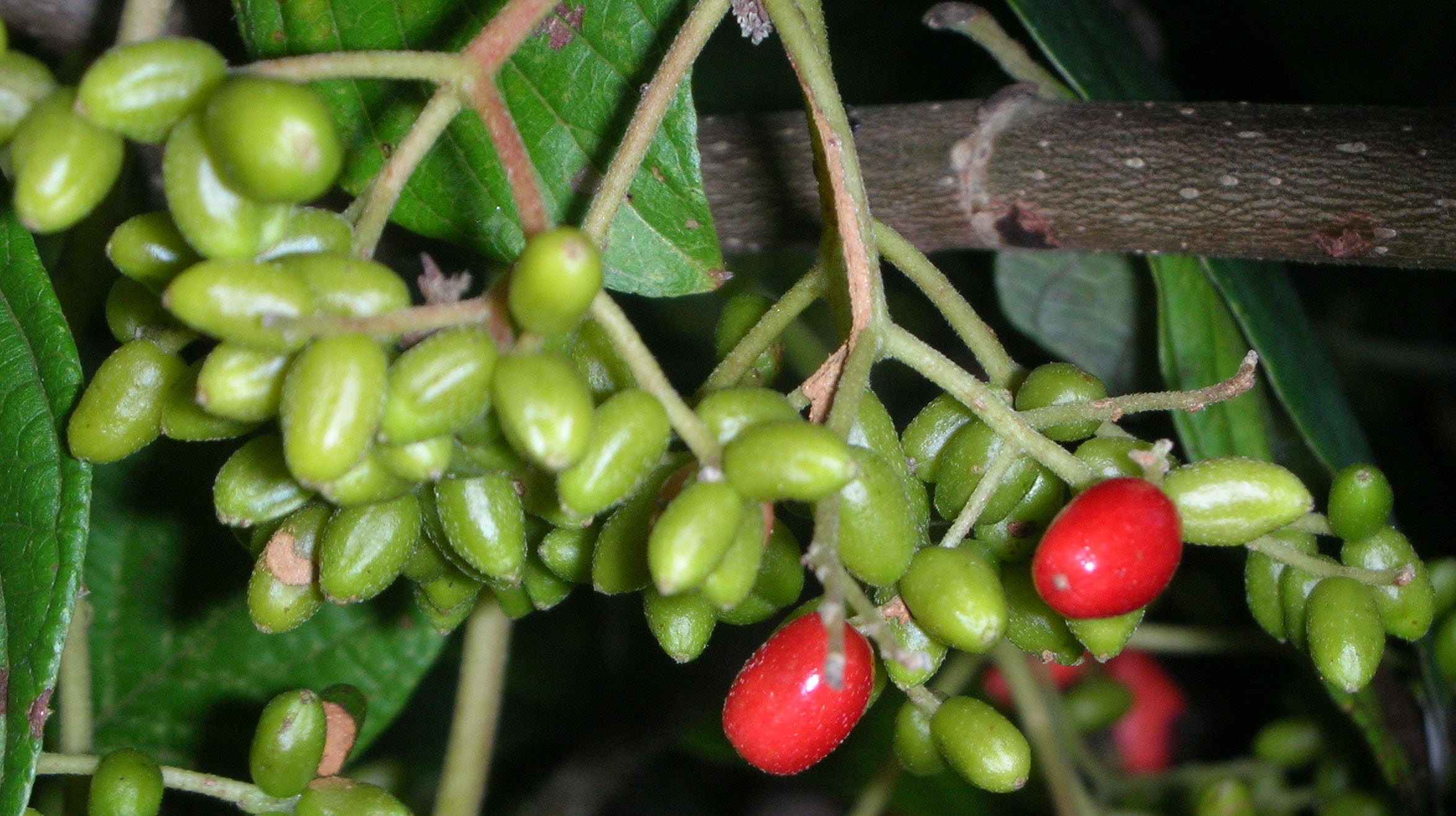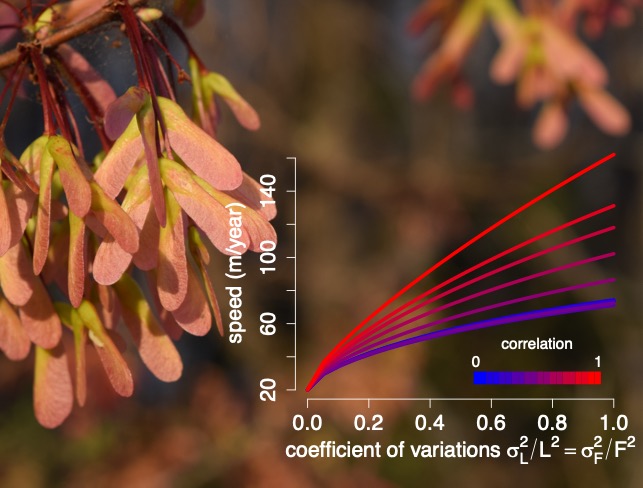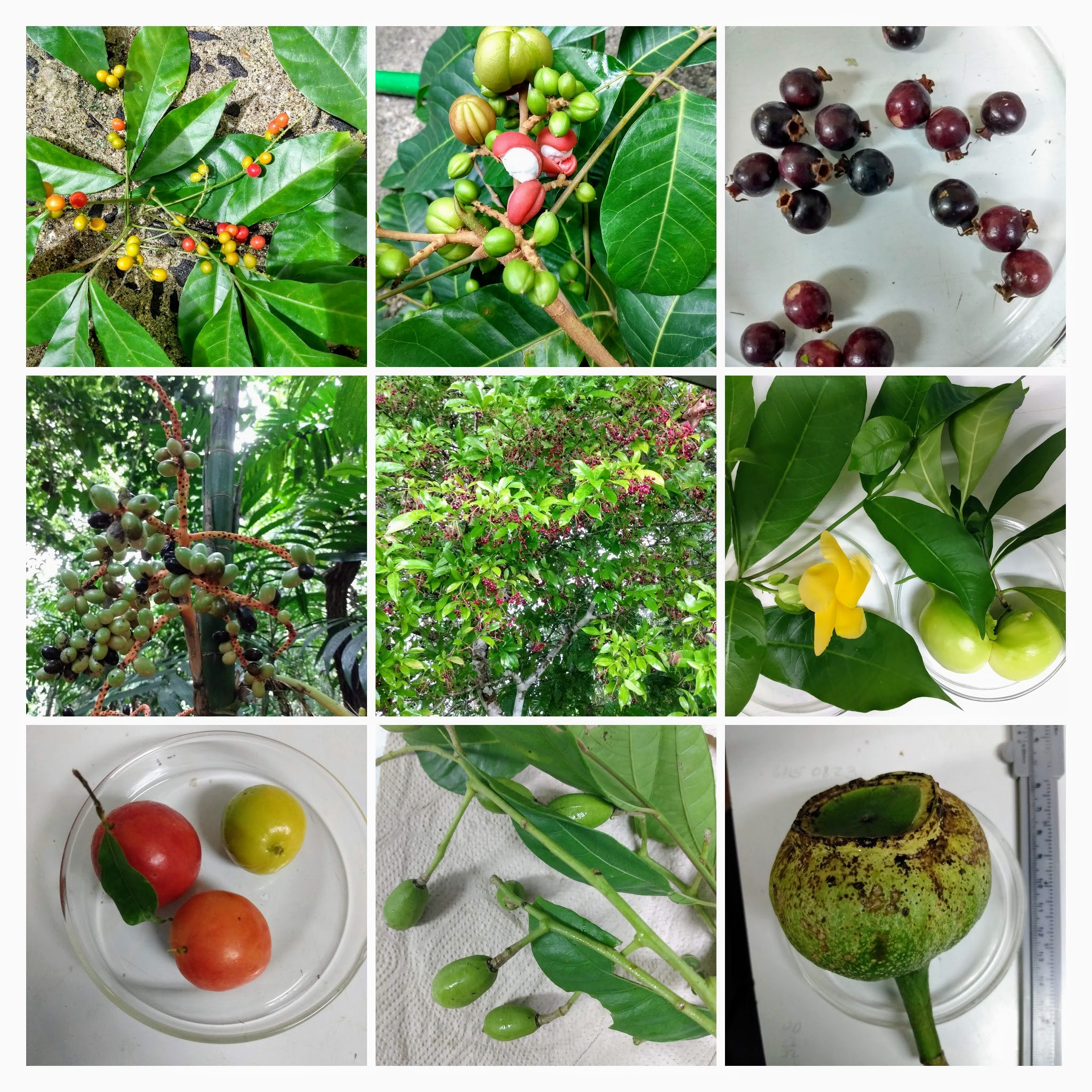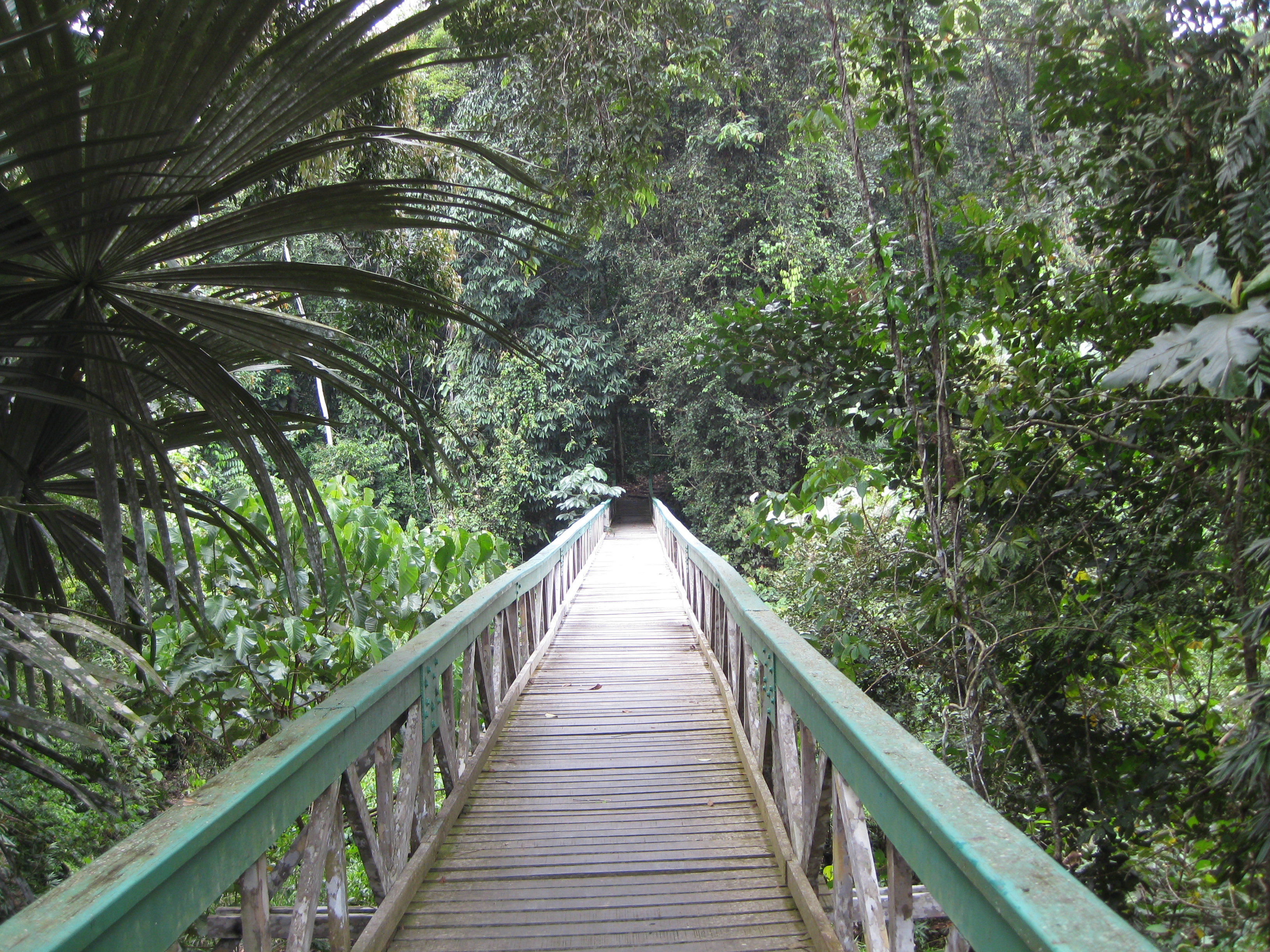Seed Dispersal Ecology Under Global Change
Advancing an Interdisciplinary Framework
Drivers of global change, such as changes in land-use and increased demand for resources by humans, affect population persistence, community diversity, and ecosystem function by altering local habitat conditions of species and the evolution and ecology of dispersal. Our research has shown that global change events reduce the movement of animals ( Marsh & Beckman 2004; Marsh et al. 2005) and plants (Beckman & Muller-Landau 2007). Seed dispersal is one of the most threatened processes in plant regeneration. Using interdisciplinary approaches, our research group is harnessing the growing availability and accessibility of data and advancing spatial models to estimate the vulnerability of species to global warming, habitat loss, and overexploitation.
Due to the long-term and spatially-complex dynamics of plant populations, understanding and predicting their responses to global change is empirically and mathematically challenging and requires strong collaboration between empiricists, theoreticians, mathematicians, and statisticians to advance beyond case studies and current limitations in theory. Drs. Haldre Rogers (Iowa State University), Clare Aslan (Northern Arizona University), and Beckman are building a transdisciplinary network of scientists and practitioners working at different scales, in different bioregions, using a wide arsenal of tools to address questions in seed dispersal ecology crossing scales, systems, and epistemologies. The goal of CoDisperse is to advance scientific understanding and public appreciation of the role of seed dispersal in population and community dynamics, enhancing our ability to predict the effects of global change on plant diversity and develop effective management and conservation measures. Check out CoDisperse and get involved!
In 2016, we organized a workshop with an interdisciplinary group of researchers to advance our predictive understanding of the role of seed dispersal in population dynamics, enhancing our ability to conserve plant populations under global change (funded by NSF DEB 1548194). The diverse perspectives of these participants facilitated transformative discussions on our ability to generalize and predict population persistence and spread in changing landscapes. This workshop resulted in a Special Issue entitiled "The Role of Seed Dispersal in Plant Populations: Perspectives and Advances in a Changing World." AoB Plants.
Current models used to predict the extinction risk of species typically include simplistic assumptions of dispersal (e.g., assume no dispersal or individuals can disperse everywhere) and demography and focus on global warming without accounting for multiple human impacts (e.g. habitat loss). In collaboration with ecologists and mathematicians, we are developing several new approaches to estimate the vulnerability of species to climate change and habitat fragmentation based on models that predict the spatial spread of populations (i.e., integrodifference equations). Predicting the spatial spread of species over time is a central question in ecology and can provide insight for strategies to manage invasive species or conserve species at risk of extinction under shifting habitats due to global warming. These projects have been supported by the Banff International Research Station for Mathematical Innovation and Discovery and the National Institute for Mathematical and Biological Synthesis.
Vertebrates disperse approximately half of all angiosperms and more than 80 percent of tropical tree species. More than one-quarter of vertebrate seed dispersers are threatened with extinction, which will disrupt the dispersal of flowering plants globally. Declining abundances of vertebrates is due to landscape fragmentation, biological invasions, logging, and overhunting.

We are integrating empirical and quantitative approaches to examine how global change will affect plant populations, communities, and ecosystems via changes in animal movement. Empirically, we are evaluating how hunting of animal seed dispersers shifts seed dispersal patterns in Peru using Bayesian models and data collected by Dr. Varun Swamy (San Diego Zoo). Because large-seeded tree species are more susceptible to declines in abundances of vertebrate seed dispersers (Beckman & Muller-Landau 2007, Wright, Stoner, Beckman, et al. 2007), disruption of dispersal is likely to shift the relative abundances of plant species depending on seed size, with variable direct and indirect effects on community and ecosystem processes.
Empirically studying the effects of severe defaunation is inherently complex due to the many ways in which humans affect the environment, the large spatial scales over which defuanation occurs, and the long-time scales required to study tree populations. As trees tend to be long-lived, there may be a long time-lag between dispersal disruption and observed declines in population growth rates creating an extinction debt in many forests. We are developing several spatially-explicit simulation models to understand the influence of overexploitation (via hunting by humans) and habitat loss on animal-mediated seed dispersal and the consequences of this disruption for seed dispersal and persistence of plant populations.
